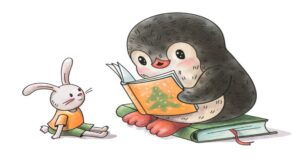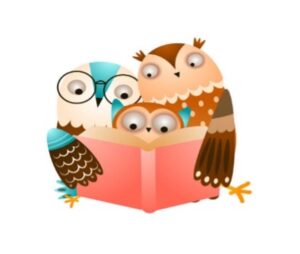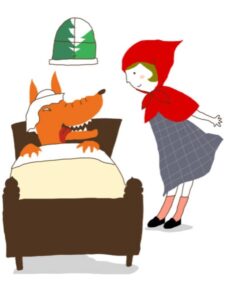
Stories we read as children can provide some of our very first friends. These children’s characters teach us those important early lessons of how to be brave, kind, strong and generous. For characters who become not only friends but teachers, they must be memorable and engaging.
Consider the following five tips for writing engaging children’s characters.
5 Tips For Writing Children Characters

Child Characters Should Have a Clear Goal
Children’s literature differs from adult literature in considerable ways; however, they are both meant to engage and entertain their reader.
So, it makes sense that some of the strong story telling techniques used for adults might also be important for creating children’s characters. One important crossover trait is having a clear goal for the main character of the story.
Children’s characters in storytelling, depending on the age category of the book, often represent an idea or stand for an ideal. Their motivations reflect those ideals. And much like the characters in adult literature, these children’s characters with clear goals will also go through a change.
Consider The Lorax, by Dr. Suess.
While The Lorax is one of many memorable children’s characters who states his goal with clarity, “I speak for the trees!”, The Once-ler, tells most of the story to the narrator and reveals his own change from the once greedy Once-ler to a character passing on a warning against his own mistakes and hope for the future.
Also consider The Ugly Duckling, by Hans Christian Anderson.
The Ugly Duckling has a clear goal of seeking acceptance from the first pages of the story. He leaves his home and finds rejection and heartache everywhere he hopes will be comfort. Only in his final moments, where he is sure this last place will be his end does he see his reflection and hear the voices of the children praising his beauty.

Child Characters Should Have Memorable Names
Character names (particularly children’s characters names) reveal much about a character when they are chosen with intention. A character name might be chosen based on sound, meaning, or description.
Consider some of the names J.K Rowling chooses to use in her Harry Potter Series.
A name like Snape is close in sound to the word snake, which is not an insignificant tie to the man who is head of Slytherin House. The likeness in the sound makes the reader associate this character with all the serpent metaphors in the novels, and question his intentions throughout the series.
Hermione, on the other hand, has a name from Greek origin, meaning messenger. As a character who is usually bringing in the knowledge needed by Harry and his friends, the name given to her seems appropriate in her character role.
Children’s characters named by a title that defines them are obvious in the stories of Winnie the Pooh by A.A. Milne.
Aside from Winnie the Pooh, the cast of characters such as Rabbit, Piglet, and Owl let the reader know not only what they are but how they will function in the story.
Rabbit spends much of his time focused on his garden and vegetables. Owl offers members of The Hundred Acre Wood wisdom.
Piglet is scattered and afraid.
Each children’s character (in this context) reveals the expectations readers have come to associate with these specific animals.
Find more advice for Naming Characters here https://fictionary.co/journal/an-editors-view-of-character-names/
Language Reveals Character Intentions
Language and word choice can reveal much about a character, including age, authority, and motivation. If we continue to look at Milne’s children’s characters, we see Pooh revealed in the following quote from Chapter One of The House at Pooh Corner:
“’He’s out,’” said Pooh sadly. ‘That’s what it is. He’s not in. I shall have to go a fast Thinking Walk by myself. Bother!’”
In this quote, Pooh repeats himself. He states the obvious and uses and endearing term for a walk. He gives a statement of innocent exasperation. Within the language, we get a sense of who Pooh is as a character.
Consider the language of Mr. Badger in The Wind in the Willows by Kenneth Grahame, when Rat begs to be let into his home.
“’Why, Ratty, my dear little man!’ exclaimed the Badger, in quite a different voice. ‘Well, I never! Lost in the snow!’”
The expressions my dear little man and well, I never reveal both the superiority Badger feels about himself, and the time-period of the story setting. These phrases might have been more common when Grahame first published his work in 1908.
How to Describe a Child in Writing
Much like names and language, description of physical traits, clothing, and mannerisms can reveal a lot about a children’s character.
Take for example, the mystery in Graeme Base’s, The Eleventh Hour.
Each guest is described in detail as the enter the feast. And while they are each in costume, the reader makes assumption about their natural animal instincts to steal the feast.
Graeme challenges his young readers with these expectations to solve the mystery.

In Little Red Riding Hood by The Brothers Grimm, the description the reader gets when Little Red Riding Hood thinks she is visiting her grandmother reveals the truth of the character and creates tension in the story. (Those big ears, big eyes, and big hands!)
Find more advice on connecting readers with character description here https://fictionary.co/journal/connect-readers-with-characters-using-description/
Writing Child Characters For Each Age Group
When writing engaging children’s characters, a writer should also be keenly aware of the age of their audience.
Age ranges in children’s literature
- Early readers – ages 4-8
- First chapter books and graphic novels – ages 6-9
- Middle-grade novels and graphic novels – ages 8-12
- Young adult novels and graphic novels – ages 12-18
The age range in children’s literature will be important when using the other tips in this article.
The goals, changes, language and descriptions of engaging characters for a 5 year old will most likely be very different for a reader closer to age 10. The writer should consider the age and stage of the reader if they want their story to connect.
Find information on editing characters here https://fictionary.co/journal/5-character-elements-of-a-story-explained/
How to Write Child Characters: Conclusion
First stories and first characters live forever with many readers, but they hold a particularly sacred place in the heart of a writer.
Those characters were also the first to inspire in the writer a passion to tell stories and write characters that will be memorable for the young readers picking up their first books today.
Now, go have a blast writing children’s characters!


